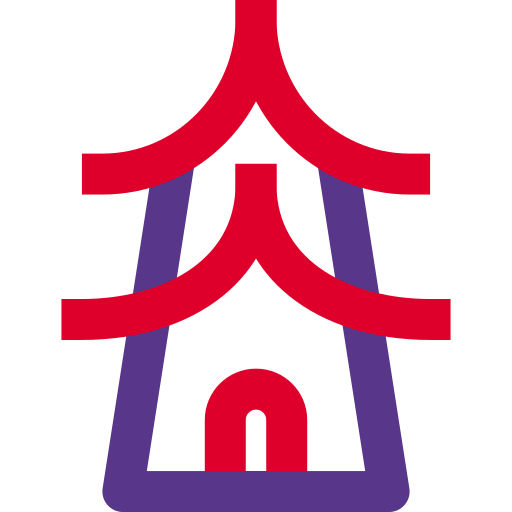東京23区の中でも「文教地区」として知られる文京区。教育水準や治安の良さから憧れの住宅地として注目される一方で、ネットや口コミでは文京区 住ん では いけないという否定的な意見を耳にすることもあります。では実際のところ、文京区は本当に住みにくいのでしょうか?それとも一部の人にとって合わないだけなのでしょうか?本記事では、「住んではいけない」と言われる理由と、実際の住みやすさ・魅力を多角的に検証し、エリア別の特徴も踏まえて徹底解説します。
文京区が「住んではいけない」と言われる主な理由
1. 坂が多くて移動が大変
文京区の最大の特徴は、地形の起伏の激しさです。
- 本駒込・白山エリアは坂道が連続
- 小日向周辺は高台と低地の差が大きい
- 自転車や徒歩での移動に負担がかかる
日常生活において「坂道問題」に悩む住民は少なくありません。文京区 住ん では いけないと感じる理由として、特にベビーカーや高齢者にとって生活のハードルとなります。
👉 ポイント:坂が多い分、高台の住宅地からは眺望が良く、落ち着いた雰囲気を楽しめる。
👉 注意点:日常の移動がストレスになりやすく、体力面で負担を感じる人には不向き。
2. 商業施設・娯楽施設の不足
渋谷、新宿、池袋のような大規模な繁華街はなく、文京区には大型商業施設がほとんど存在しません。
- ショッピングモールや映画館が少ない
- 飲食店の選択肢は限定的
- 外食や娯楽は隣接区(豊島区・新宿区・千代田区)に依存
日用品はスーパーや商店街で揃いますが、「買い物やエンタメを気軽に楽しみたい」という人には、文京区 住ん では いけないと感じることがあるかもしれません。
👉 ポイント:繁華街が少ない分、静かで落ち着いた環境が維持されている。
👉 注意点:娯楽性を求める若年層やアクティブなライフスタイルには不向き。
3. 家賃・地価が高い
- ワンルーム:平均8〜10万円
- 2LDK以上のファミリー物件:20万円超が一般的
- マンション購入価格も23区上位
学生や新社会人にとっては負担が大きく、住みにくいと感じる人も少なくありません。
4. 夜の静けさと利便性の低さ
- コンビニ以外の店が早く閉まる
- 夜遅くに外食できる場所が少ない
- 都会らしい賑わいに欠ける
👉 ポイント:静かで落ち着いた夜を過ごせる。
👉 注意点:夜型のライフスタイルの人には退屈。
エリア別にみる文京区の特徴
- 本郷・湯島エリア:東大本郷キャンパスがあり、学生街として活気。ただし家賃は高め。
- 小石川・後楽園エリア:東京ドームシティや小石川後楽園があり、娯楽と自然が共存。坂も多い。
- 白山・本駒込エリア:下町的な商店街が残るが坂が多い。都営三田線でアクセス良好。
- 根津・千駄木(谷根千)エリア:下町情緒とカフェ文化。観光客が多く休日は賑やか。
詳細は文京区の住みやすさ・治安を解説する記事でも、各エリアごとの特徴が具体的に紹介されています。
文京区の魅力と強み
- 教育環境の充実:東大をはじめ、名門校が多く「教育に強い区」。
- 治安の良さ:犯罪発生率が非常に低い。オリックス銀行の調査でも23区中1位と紹介されています。
- 医療施設の多さ:東大病院や順天堂大学病院など有名病院が集中。
- 緑と歴史:小石川後楽園や六義園などの歴史的庭園、神社仏閣。
交通アクセスの実際
文京区にはJR山手線の駅がなく、地下鉄中心の交通網です。丸ノ内線、南北線、三田線、有楽町線、千代田線が利用でき、新宿・池袋・東京駅へ30分圏内。ただし、山手線のような利便性はやや劣るため、通勤や通学に不便を感じる人には文京区 住ん では いけないと思われる場合もあります。
👉 注意点:乗り換えが多くなる場合があり、通勤経路によっては不便。
文京区に住むのに向いている人・向いていない人
向いている人
- 教育環境を重視するファミリー
- 治安と落ち着きを求める人
- 医療体制を重視する高齢層
向いていない人
- 坂の多さに体力的な不安がある人
- 夜遊びや買い物が好きな人
- 家賃を抑えたい単身者
住民の声から見る文京区
- 「子育て環境が抜群。学校や塾が近くにあり安心」
- 「坂は大変だけど静かで落ち着いた暮らしができる」
- 「買い物は池袋や上野に出ることが多い」
- 「夜は本当に静かで治安が良い」
こうした口コミからも、文京区は「住みにくい」というよりも「ライフスタイルによって評価が変わる区」と言えます。
文京区の治安ランキング解説でも同様の意見が見られます。
まとめ
文京区が「住んではいけない」とされる理由は、坂の多さ・商業施設の少なさ・家賃の高さ・夜の静けさといった点にあります。しかし、それ以上に教育環境の充実・治安の良さ・医療施設の豊富さ・歴史と自然の調和といった魅力が際立ちます。結論としては、「都会的な賑わいを求める人には不向きだが、落ち着いた生活や子育てを重視する人には理想的な区」です。文京区 住ん では いけないという言葉は一面的であり、むしろ自分の価値観に合うかどうかで選ぶべきエリアといえるでしょう。



